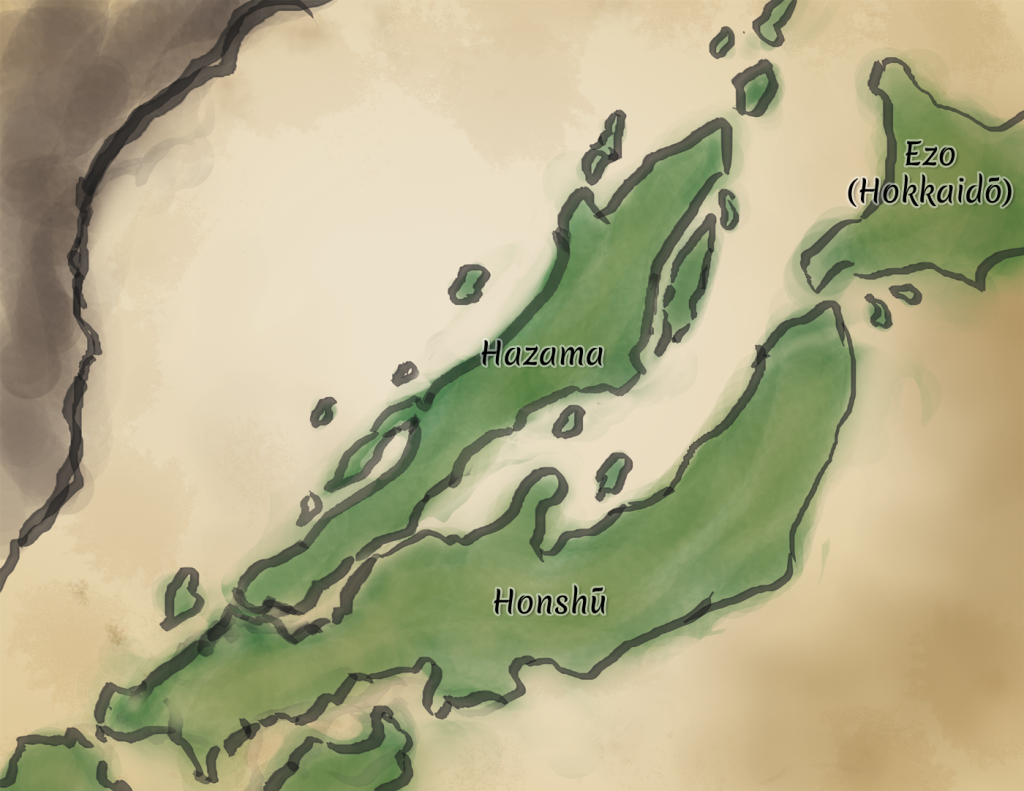The world of Mysteries of the Yokai sets itself apart from the real world in many ways. Most notable of these differences is the existence of magic and the supernatural. Mysteries of the Yokai represents Japan in a way that’s informed by history, folklore, and mythological tales. But there are important changes that we have written into the canonical setting. This series of posts is meant to highlight and discuss the reasonings for these changes, giving me a platform to also discuss the fascinating tidbits of Japanese culture and history.
Welcome to the first article in the Mysterious Lore series where we discuss differences between the world of Mysteries of the Yokai and the real world. Today I’m going to talk about one such difference you might have noticed from looking at our map, the existence of new islands. Most notable of these is Hazama, the largest of the fictional islands. If Hazama existed in the real world, it would be the second largest island in the Japanese Archipelago. It is the home of the Emperor’s throne in the city of Miwa and the setting for many of the adventures we’ll write for our players.
The name Hazama is spelled using the kanji, 羽 (wings, feathers) and 間 (interval, space). The shape of the Japanese archipelago in ancient times has been likened to that of a dragonfly. If Japan is a dragonfly, then the island of Hazama would form its wings. As such, dragonflies, wings, and feathers are a common motif in the names of places on the island. The dragonfly is a recurring symbol in Mysteries of the Yokai and it happens to be one that has deep meaning in Japan too. The dragonfly is an auspicious symbol, carved onto protection charms and on samurai armor. All its meanings and appearances are too many to be discussed in this post, I’ll make sure to go into more detail at another time.
Why make such a drastic change to the geography of Japan? A new land gives players a chance to write their own stories and their own places. It allows them to be creative without accidentally stepping on the toes of history. These locations will be new and fresh for everyone, including those knowledgeable about Japan. A large swath of Hazama will be left undefined to allow players to to use familiar places from the real Japan. It lets players (the GM is also a player!) explore new locations they’ve built in our version of the geography.
For the players that want their games to be a bit more historical and accurate, the rest of Japan is still there! History has diverged but not too much, players who want to wander the Kofun tombs of Osaka, or the Emishi controlled island of Ezo (now called Hokkaido) are free to do so. However, this doesn’t mean the mainland remains unchanged, those interested in wandering the gardens of the Heian capital will find the city has befallen a supernatural disaster. A good mix of fantasy and reality exists in our setting that should provide something interesting for everyone.
And what if this setting were to reach modern times? Would these changes have any lasting effects on history? I’ve always liked the idea that this game’s setting could technically plug into actual history—that some time ago, there really ways an island called Hazama that eventually disappeared from the history books as if by magic.

